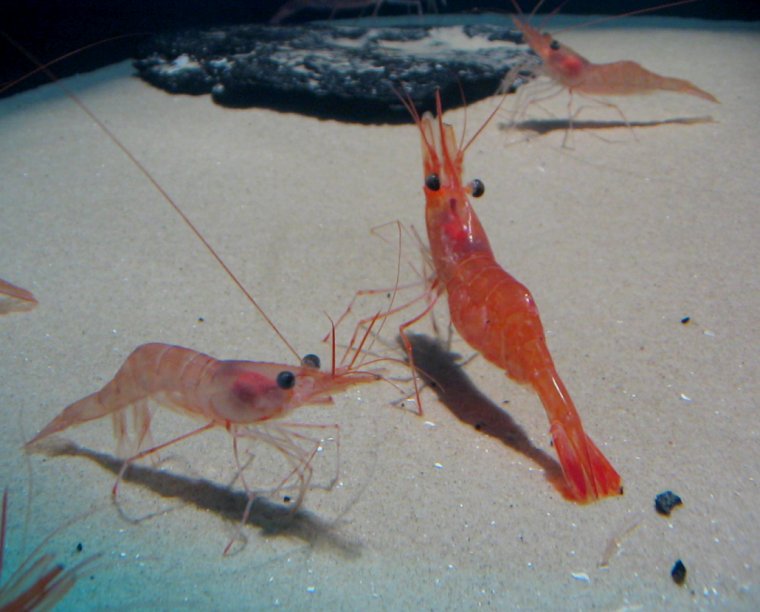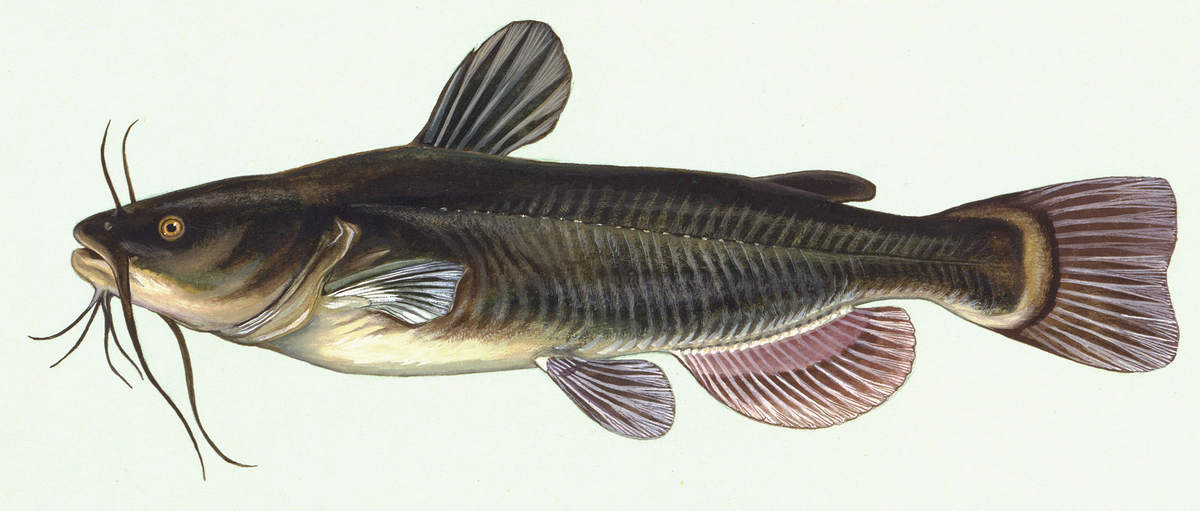Aquaculture view
Aquaculture view is a column in each edition of International Aquafeed magazine (IAF), written by Dominique P Bureau.
Part of the IAF editorial panel, Dom has a PhD in Nutritional Sciences from the University of Guelph, Canada.
Today he teaches various undergraduate and graduate courses on animal nutrition and agriculture at the University of Guelph. Between 2007 and 2009, he coordinated the “Paris Semester”, a study abroad program for undergraduate students at the University of Guelph.
He serves on a number of international committees, including the US National Research Council Committee on Nutrient Requirements of Fish and Shrimp.
See all of the Aquaculture view columns
here.
January - February 2014
Requirement and digestibility modelling to ensure safe phosphorus intake
One of the major environmental concerns for freshwater fish farming operations is the release of phosphorus waste. This element is the most limiting factor for algae growth in freshwater ecosystems, and even a modest increase can, under certain conditions, set off a chain of undesirable events in the water body including accelerated plant growth and algae blooms. The potential for deleterious effects on aquatic ecosystems is high.
On the other hand, phosphorus is an essential nutrient for all animals. There is a need therefore to maintain the supply of the nutrient (in digestible form) to meet the requirements of the farmed organisms while warding off dietary excess, which results in increased waste output and the potentially deleterious environmental impacts. In addition to this, phosphorus is a relatively expensive nutrient. On top of environmental concerns, formulating feeds to higher-than-required phosphorus levels can in some cases reduce their cost-effectiveness.
In order to formulate feeds that provide an adequate level of digestible phosphorus – that are safe for the organism but not excessively high – aquaculture nutritionists and feed formulators need solid information on the phosphorus requirement of the animals as well as the digestibility (or availability) of the phosphorus contained in the different ingredients and/or the final feed mixture.
While the phosphorus requirements and digestibility for fish and crustaceans have been the topics of numerous research projects and publications over the past 50 years (many of them reviewed in NRC, 2011; Prabhu et al., 2013), I feel that the state of the art is not as advanced as it should be. At any rate, we have not invested enough time grasping the relatively complex issues associated with estimating the phosphorus requirement. Estimates of this value in fish derived from different studies often yield significantly different results. Moreover, I feel there is a general lack of appreciation for the factors that affect or determine the digestible phosphorus content of formulated aquaculture feeds.
Estimating the phosphorus requirementEstimates of dietary phosphorus requirements of fish species generally range from 0.3 to 1.0 percent of diet (NRC, 2011). Digestible phosphorus values as low as 0.3 percent of diet have been reported for some species (e.g. channel catfish). Higher estimates, around 0.5 to 0.6 percent of diet, have been reported for rainbow trout and hybrid striped bass. Somewhat higher digestible phosphorus requirements (greater than 0.7 percent) have been reported for some species, such as Japanese seabass, common carp, silver perch, yellow croaker and haddock.
Some of the variability in estimates of phosphorus requirements across different species (and studies) is likely due to differences in digestibility between species, and with issues associated with making an accurate estimate of phosphorus digestibility in the diets used in quantifying requirements.
However, many other factors are likely playing a role. The live weight of the animal, the response parameters used to estimate requirements, and the composition of the feed are all factors that have been shown to have a significant impact on estimates of the digestible phosphorus requirement in fish. Very limited efforts have been made to study or comprehensively review, or integrate, analyse and model the phosphorus requirements of different fish species as a function of their life stages, dietary composition, growth rates, etc.
A few such knowledge integration and modelling efforts can be found in the recent literature (e.g. Hua et al., 2008; Prabhu et al., 2013), and these publications should, in my opinion, be read by anyone interested in the role of the element in fish nutrition. However, more sustained research and modelling efforts are needed in order to develop a more precise estimate of the phosphorus requirements of different fish species at different life stages or under different dietary regimes.
Accurately estimating digestibilityFormulating feeds to a precise digestible phosphorus content can be a difficult task, as common feed ingredients are highly variable both in phosphorus content and in the digestibility estimates provided by the literature. Not only does the phosphorus content vary greatly between different feed ingredients, but it is also found in varying chemical forms.
These forms can broadly be classified in four groups: organic phosphorus, phytate phosphorus, mineral phosphates and bone phosphorus (hydroxyapatite). Experimental evidence suggests that digestibility of these different chemical forms differs widely in fish. Organic compounds such as phosphorylated protein, creatine, phospholipids and nucleic acids, are apparently highly digestible for fish. Phytate phosphorus, another organic compound, is however not digestible to fish, at least under most conditions.
The digestibility of mineral phosphates, such as dicalcium phosphate and rock phosphate, varies with their degree of solubility but is generally high (assumed to be between 60 and 95 percent digestible depending on forms and species). Digestibility of bone phosphorus is variable between fish species and depends mostly on gastric acid secretion by the animal. For rainbow trout, a fish with a true (acid) stomach, digestibility of bone phosphorus is assumed to be between 40 and 60 percent.
Salmonid model
These broad generalisations are not very precise or helpful, nor do they fully take into account differences such as the various interactions that can occur between different forms of dietary phosphorus, their levels and the fish species to which they are fed. Through a detailed meta-analysis of the published data, Hua and Bureau (2006) developed a model to estimate digestible phosphorus content of salmonid fish feeds. Based on the results of the meta-analysis and subsequent validation work, they concluded that the digestible phosphorus content of salmonid feeds could be reliably estimated with the following equation:
Digestible P = 0.68 bone-P + 0 phytate-P + 0.84 organic P + 0.89 Ca monobasic / Na / K Pi supplement + 0.64 Ca dibasic Pi supplement + 0.51 phytase/phytate – 0.02 (phytase/phytate)2 – 0.03 (bone-P)2 – 0.14 bone-P × Ca monobasic / Na / K Pi supplement
(The units for all variables are g/kg, except for the phytase/phytate ratio, for which the unit is 100 FTU phytase/g phytage.)
Hua and Bureau (2006) demonstrated that this simple equation or model provides a reliable estimate of digestible phosphorus content of salmonid feeds, formulated with a wide variety of ingredients of animal and plant origins. However, they did not initially assess whether this model was applicable to other fish species. The ability to digest different compounds is likely to differ from species to species, due to the anatomical and physiological differences found in the gastrointestinal tracts among different kinds of fish.
Other speciesThe same modelling approach was consequently employed by Hua and Bureau in 2010, to quantify differences in phosphorus digestibility amongst species and develop models as needed that are better suited to different species. Carp species (cyprinids), which lack a true stomach and maintain a neutral pH throughout the digestive tract, and tilapia (warm water fish species with a true stomach that exhibit a low gastric pH of 2–3) were compared to results previously obtained with rainbow trout, a cold water species also with a true stomach and relatively low gastic pH (3–4).
A large meta-analysis was carried out using one dataset for tilapia (92 dietary treatments from 14 studies) and another for carp (101 dietary treatments from 20 studies). Phosphorus digestibility models for tilapia and carp were developed through multiple regression analysis, and validated by comparing model simulations with observations from independent experimental data from digestibility trials conducted with carp and tilapia.
The digestibility model specifically obtained for tilapia through the multiple regression analysis was as follows:
Digestible P = 0.71 bone-P + 0.21 phytate-P + 1.06 organic P + 0.97 Ca monobasic / Na / K Pi supplement + 0.56 Ca dibasic Pi supplement + 0.25 phytase/phytate – 0.02 (phytase/phytate)2 – 0.03 (bone-P)2 – 0.12 bone-P × Ca monobasic / Na / K Pi supplement
Multiple regression analysis of the carp modelling dataset resulted in a different digestibility model:
Digestible P = 0 bone-P + 0 phytate-P + 0.63 organic P + 0.91 Ca monobasic / Na / K Pi supplement + 0.39 Ca dibasic Pi supplement + 0.50 phytase/phytate – 0.04 (phytase/phytate)2
A highly significant (P < 0.0001) linear relationship was observed between predicted digestible phosphorus content and observed values from the independent dataset. Statistical analysis suggested that the prediction were accurate and free from bias.
The three models developed by Hua and Bureau between 2006 and 2010 suggest that significant differences in the apparent digestibility of phosphorus exist among carp (cyprinids), tilapia (cichlids) and salmonids. Carp appear to have a poor ability to digest phosphorus compounds of low solubility. Cyprinids cannot effectively digest phosphorus bound in bone particles (digestibility of bone phosphorus was estimated to be nil), and their ability to digest dibasic calcium phosphates is lower (slightly below 40 percent) in comparison to cichlids and salmonids (in the range of 55–65 percent). This difference is likely attributable to the absence of a true stomach in cyprinids.
Hua and Bureau’s three models provide a simple means of estimating the digestible phosphorus content in the feeds of different fish species (and digestive anatomies), and can be a very useful for fish feed formulators. They may also be helpful for feed formulation or for more objective analysis and interpretation of the various studies on the phosphorus requirements of different fish species.










